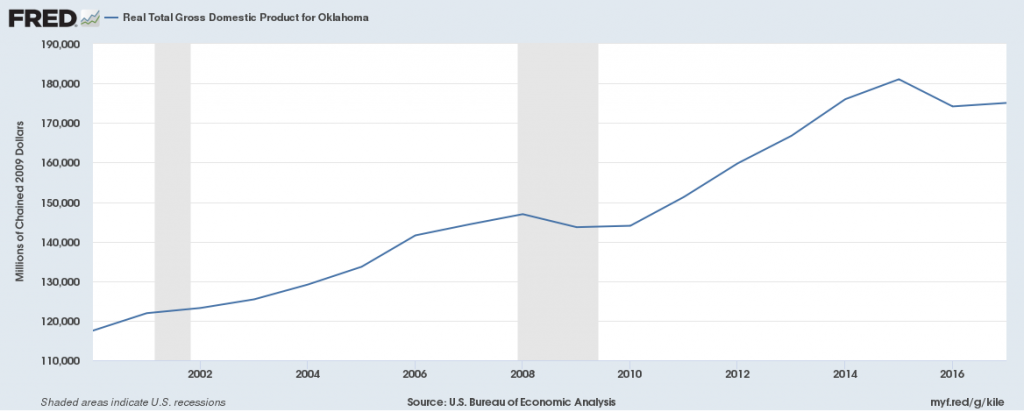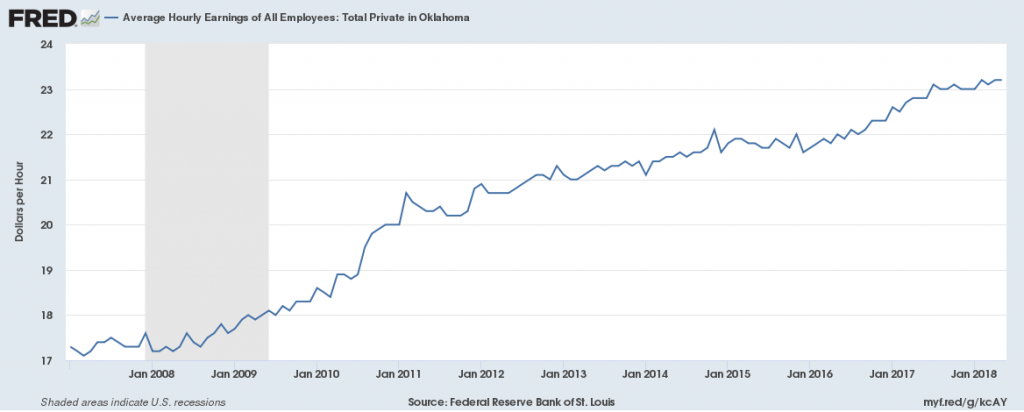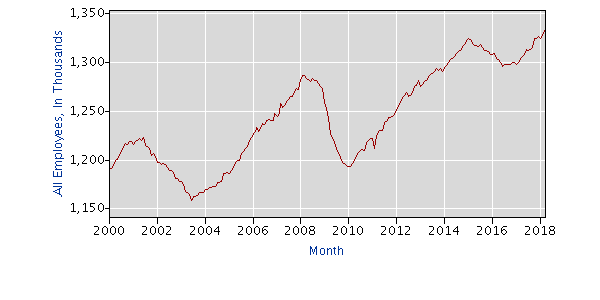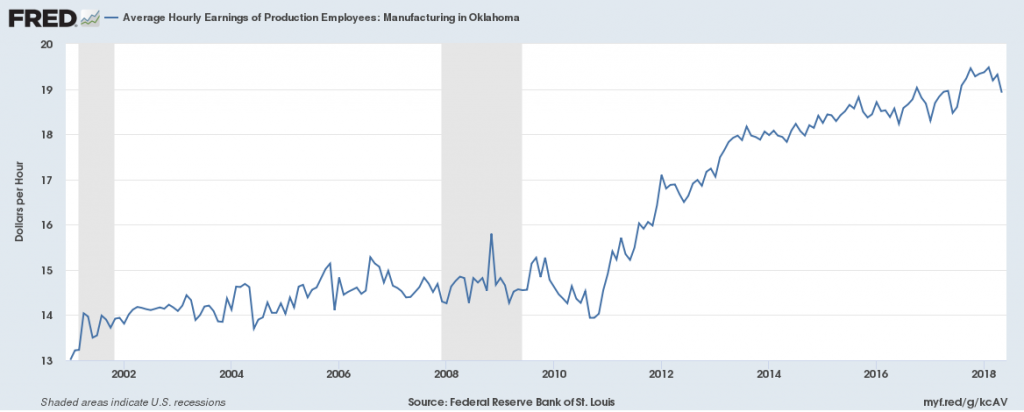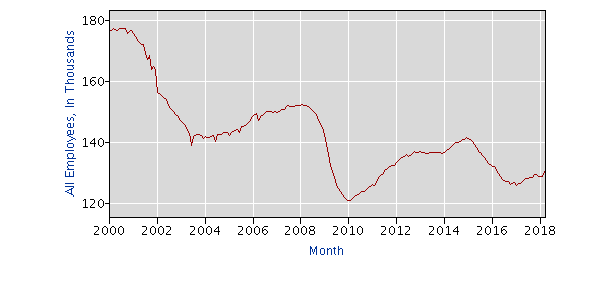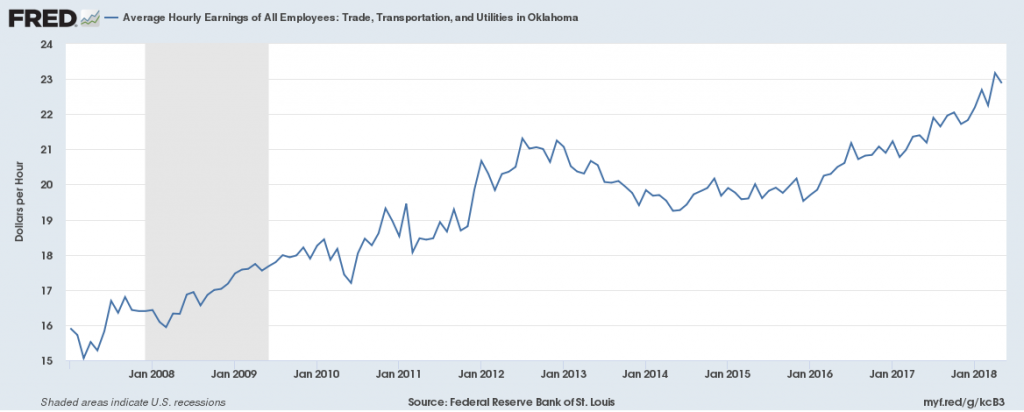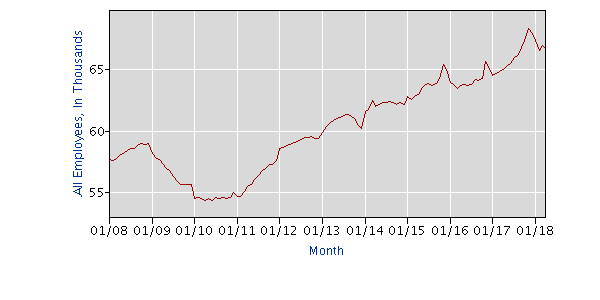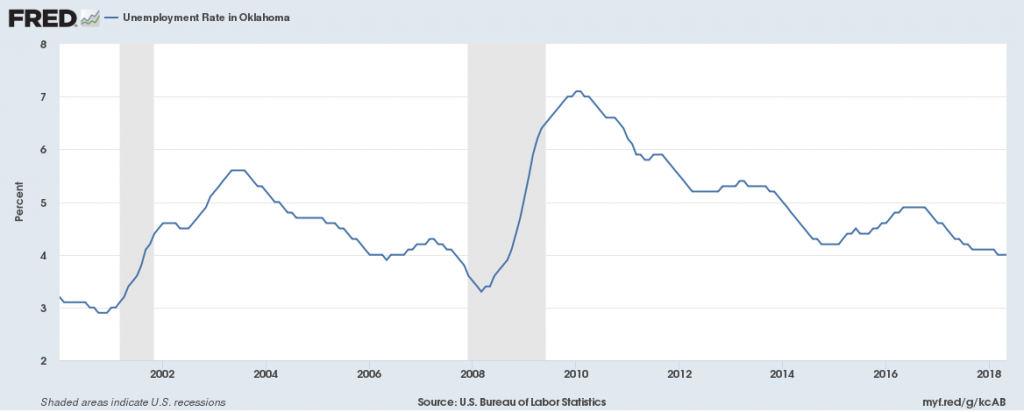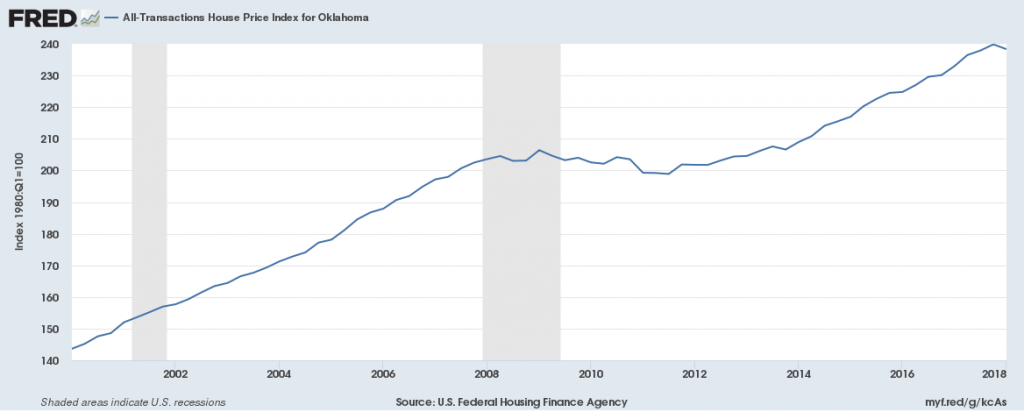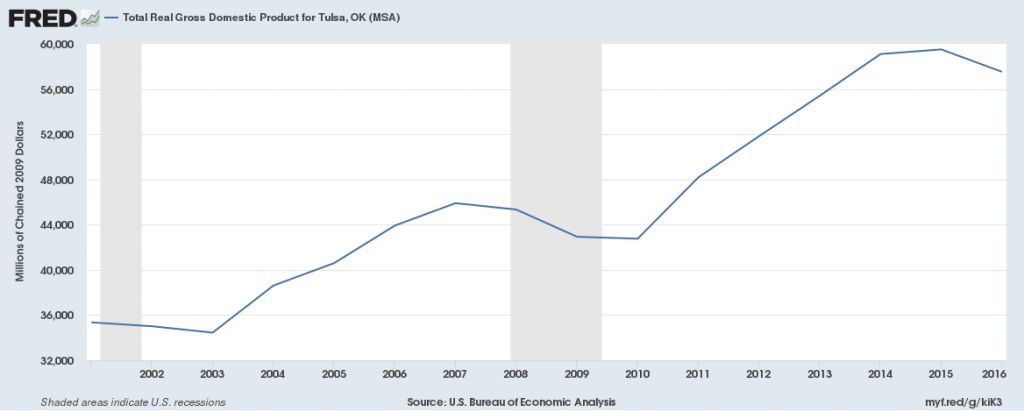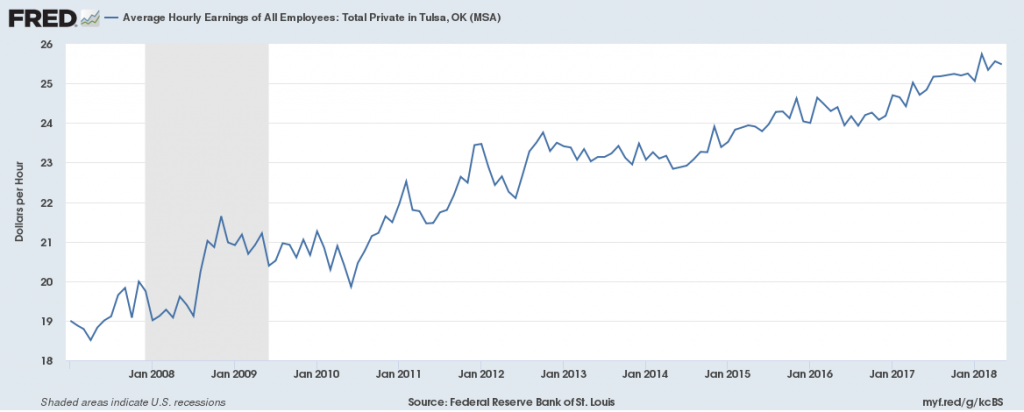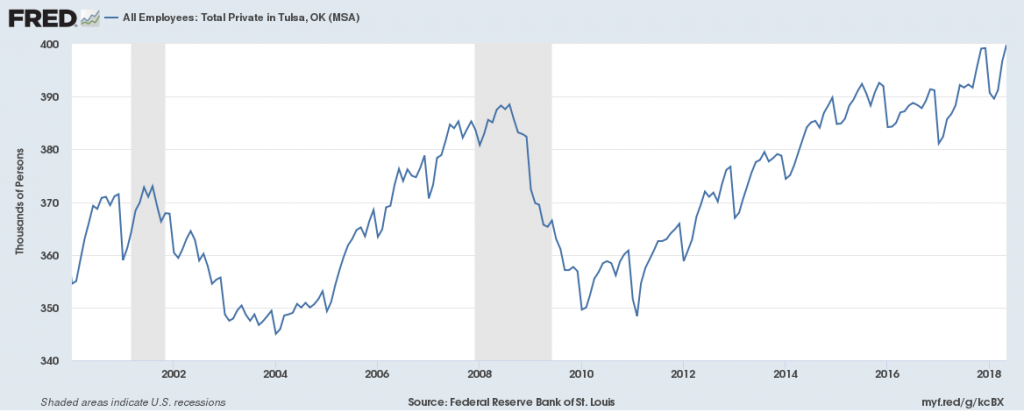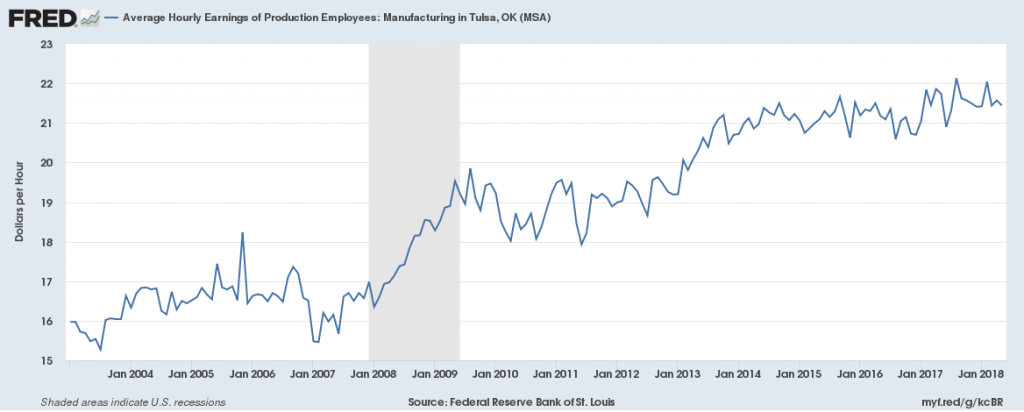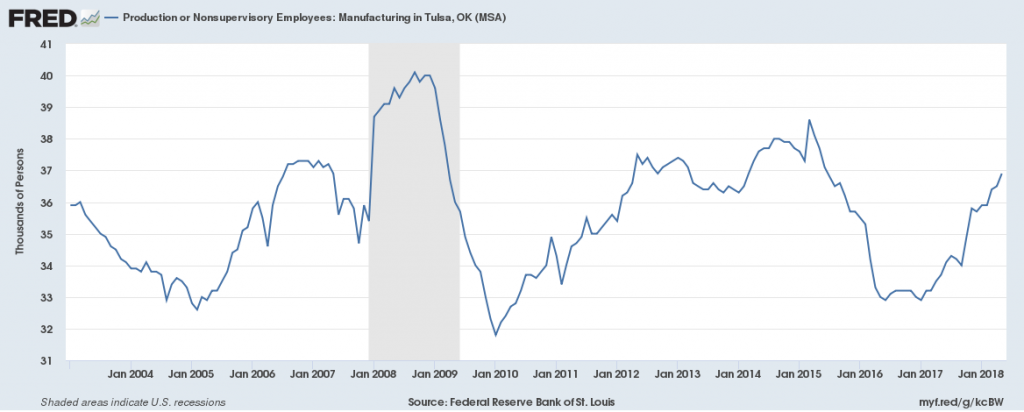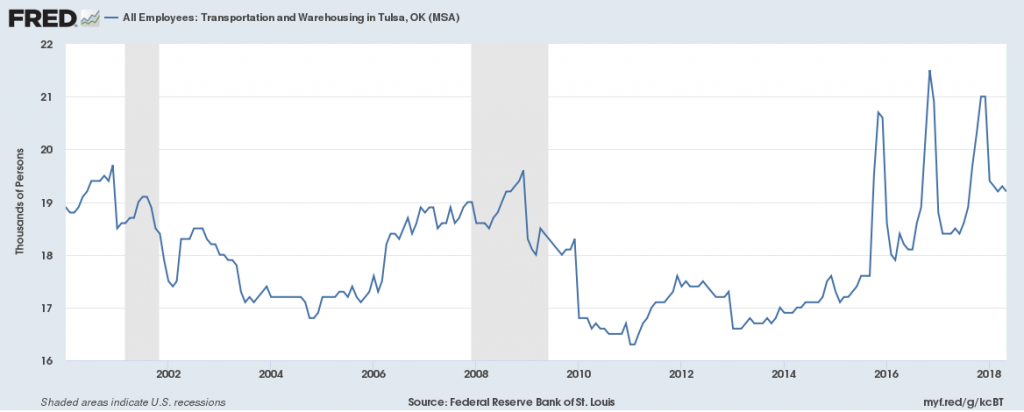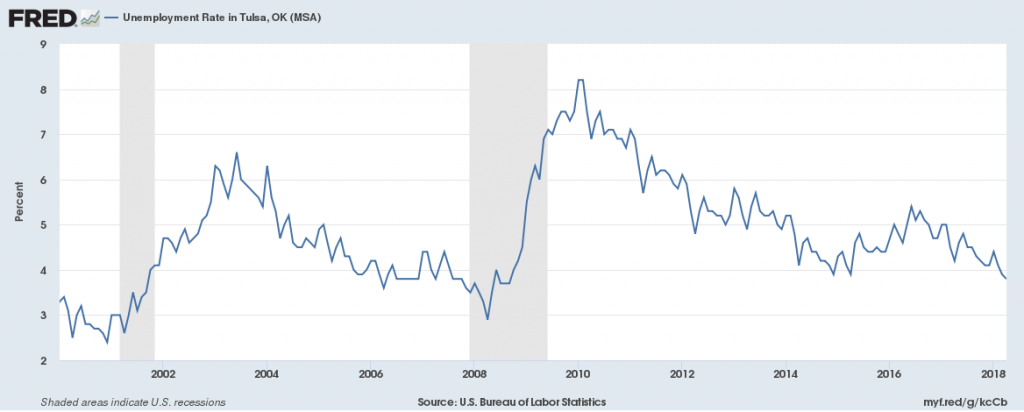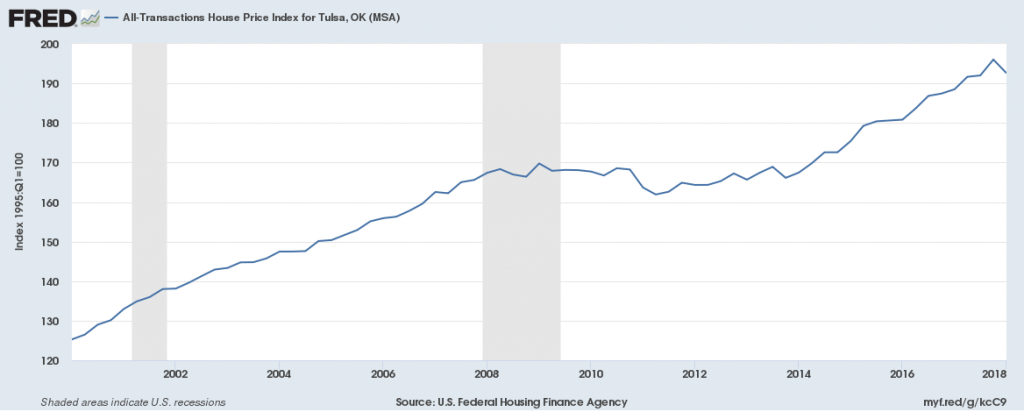Gross Domestic Product
Real GDP (a measure of economic growth) has been increasing since 2010 from the most recent low of $144 billion. It has grown to $175 billion by 2017, higher than pre-recession peak of $146 billion in 2008.
Jobs
Private-sector employers have added 125,000 jobs since 2010, the national low point for private-sector employment. From 2017 to 2018 the private sector has added approximately 30,000 net new jobs for a total of 1,325,000, putting it above the pre-recession high of 1,275,000 total jobs in the state’s private sector in 2008. Average hourly wages in the private sector have grown since 2008, going from $17.25/hr to $23/hr in 2018.
Manufacturing employment has been declining since 2000, especially during the 2008 recession but recovered until 2014 but has shrunk since then. There were 130,000 jobs in this sector in 2018, 50,000 less than in 2000 and 10,000 less than in 2014. 2018 employment is slightly above recession era lows. Average hourly wages of production employees was $19/hr in 2018, up from their 2010 low of $14/hr.
There were 67,000 jobs in the Transportation, Warehousing and Utilities sector in 2018, 12,000 jobs above its 2010 low and 7,000 above pre-recession levels, showing growth in this sector. The average wage in Trade, Transportation and Utilities occupations has grown from $16/hr in 2008 to $23/hr in 2018.
Unemployment
The unemployment rate in 2018 is 4%, down from the prior year’s 4.5% rate. This is above the national average of 3.9% unemployment.
Housing
The House Price Index, a measure of the cost of housing, stagnated after 2008 until 2012 when it grew from 200 to 238 in 2018, showing increased housing costs.
Tulsa
Gross Domestic Product
Real GDP (a measure of economic growth) increased from 2010-2015 from the most recent low of $43 billion. Since 2015 it has shrunk by $2 billion to a total of 57 billion in 2016, higher than pre-recession peak of $46 billion in 2007.
Jobs
Private-sector employers have added 50,000 jobs since 2010, the national low point for private-sector employment. From 2017 to 2018 the private sector has added approximately 15,000 net new jobs for a total of 400,000, putting it above the pre-recession high of 398,000 total jobs in the state’s private sector in 2008. Average hourly wages in the private sector have grown since 2008, going from $19/hr to $25.50/hr in 2018.
Manufacturing employment has been fluctuating wildly since 2004, going up until 2008, declining until 2010, growing until 2015, declining until 2017, and growing again currently. Current employment in production and nonsupervisory roles is 37,000, similar to 2007 levels. Average hourly wages of production employees was $21.50/hr in 2018, up from their 2008 low of $16.50/hr.
There were 19,000 jobs in the Transportation and Warehousing sector in 2018, similar to pre-recession levels, showing growth in this sector. The average wage in Transportation and Material Moving occupations was $16.65 in 2018.
Unemployment
The unemployment rate in 2018 is 3.9%, down from the prior year’s 5% rate. This is the national average of 3.9% unemployment.
Housing
The House Price Index, a measure of the cost of housing, stagnated after 2008 until 2012 when it began to grow from 165 to 193 by 2018, showing increased housing costs.






